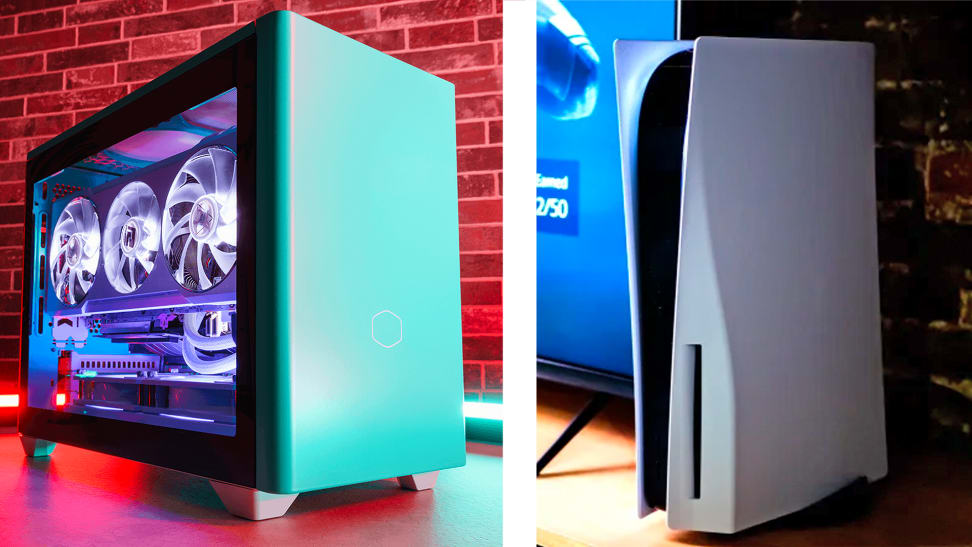 — Recommendations are independently chosen by Reviewed’s editors. Purchases you make through our links may earn us a commission.
— Recommendations are independently chosen by Reviewed’s editors. Purchases you make through our links may earn us a commission.The Playstation 5 and Xbox Series X have been out for almost a year, but finding one at retail price can still be difficult. However, PC gaming is just as fun as console gaming, and most of us need a PC, anyway. With the exception of graphics cards, PC parts are still plentiful on the market, and you can customize your PC however you like. Want a small, powerful PC that trumps the PS5 in looks and performance? It’s easier to build than you think.
Small form factor PCs have blossomed in the past few years, giving PC enthusiasts the freedom to stuff huge graphics cards into cases barely bigger than a shoebox. Most of us know when we need a PC instead of a console, but if you're debating between the two, there are pros and cons of each to take into consideration.
Console versus PC
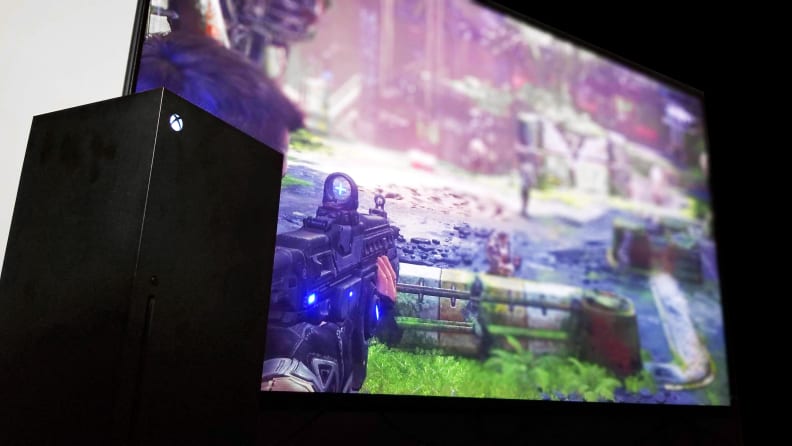
The Xbox Series X takes design cues from popular small form factor PC cases, like the NZXT H1 Mini.
Undoubtedly, a console is cheaper than a similarly powerful gaming PC. For the cost of a budget PC, you get a box that can play the latest big-budget releases guaranteed for years to come. Playstation also has some of the best exclusive games in the industry, like Ratchet and Clank, Persona 5, and Spider-Man. Consoles are also dead-simple to operate—you turn it on, you log in, and you're playing. In comparison, a PC that can play games like Resident Evil: Village at 4K and 60 frames per second can easily cost $2,000 or more, especially with the semiconductor shortages of 2021.
However, the extra thousand dollars affords you a lot more freedom. You can use any controller, user interface, or storefront you want. Most Playstation exclusives make their way to PC a few months after release—like Red Dead Redemption, Horizon: Zero Dawn, and Ghosts of Tsushima—if you’re okay with waiting a little longer. Otherwise, you can use Sony’s cloud gaming service, Playstation Now on your PC.
Meanwhile, Microsoft prides itself on releasing cross-platform games on Xbox, PC, and Game Pass. There is also a lot more you can do within gaming, such as more streaming software and hardware options, cloud gaming, modding, and even making your own games.
Of course, the biggest, most obvious benefits are the ability to upgrade your PC parts as new hardware is released, and you can use your PC for stuff besides gaming (like work, for instance). If you can afford it—and especially if you have rigorous computing needs outside of gaming—it makes more sense to build a gaming PC than to settle for a console.
PS5 and Xbox Series X specs
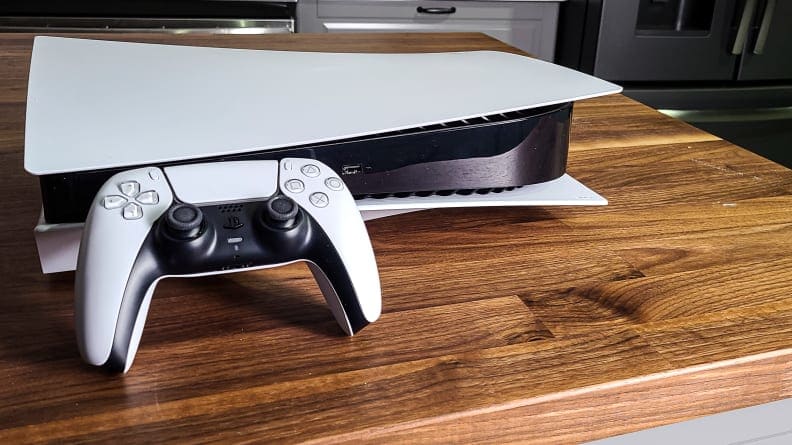
The Playstation 5 and Xbox Series X run on custom AMD hardware pulled straight from the PC world.
The Playstation 5 and Xbox Series X can play games at 4K up to 120 frames per second. While there are slight differences in their architecture, they share many similarities. Both run off custom Zen 2 AMD processors, custom RDNA 2 AMD graphics cards, 16GB of memory, 825GB (PS5) / 1TB (XSX) of custom NVMe SSD storage, and take advantage of new communication and interfacing tech.
Shopping for equivalent memory and storage, and even a case, is the easy part. But you’ll need to compare the CPU and GPU processing power from each console to figure out what desktop PC processor and graphics card you need—not to mention find the right case that fits it all. Luckily our next section covers that gamut.
Console-equivalent PC specs
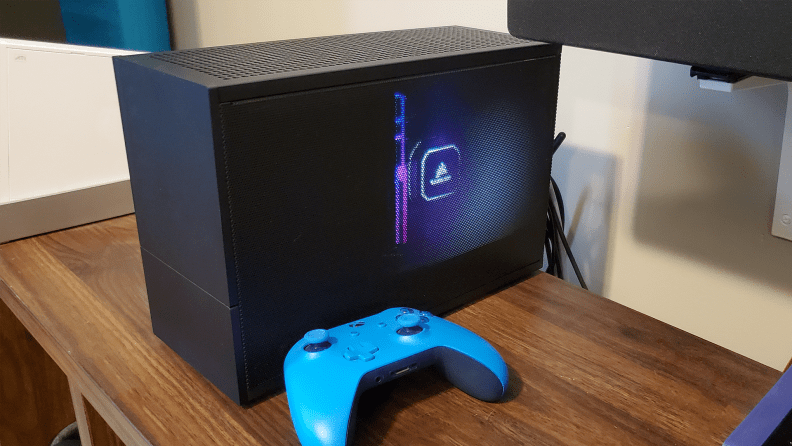
This small PC case may be the size of a shoebox, but it has enough room for an Nvidia RTX 3070 graphics card and a water-cooled CPU.
If you want to build a PC that matches the size and performance of the PS5 or Xbox Series X, start with the case—specifically an ITX case. Most cases come in three sizes: ATX (full tower), mATX (mid-tower), and ITX (small form factor), but an ITX case is going to be closest in size to the new consoles.
The best ITX cases have metal construction, PCIe risers, and plenty of mounts for cooling and components for the greatest flexibility. Cooler Master's NR200P is a great choice that’s easy to find, and it has a strong modding community. The SSUPD Meshlicious, Darkflash DLH21, and Louqe Ghost S1 are also awesome if you want something less mainstream.
An ITX tends to have trouble fitting GPUs longer than 205mm. You might need a “mini” graphics card. They’re about half the size of a standard GPU and generally come with one or two cooling fans. If you’re looking to save the most money possible, you’re in luck. Not only do mini GPUs tend to be a little cheaper than their full-sized counterparts, but last-gen PC parts are the best equivalents to the new PS5 and Xbox Series X.
Along with the AMD Ryzen 7 3700X processor and the AMD Radeon RX 5700XT graphics card or Nvidia GeForce RTX 2070 graphics card are both great options for a PS5/Xbox Series X PC-equivalent build since they both have similar performance to the console’s custom chips.
However, the RX 5700XT does not have ray-tracing capabilities—which give graphics an extra level of polish—so you might be better off going with the newer AMD Radeon RX 6700XT. Not only can the RX 6700 XT run games with ray tracing on, but it’s also faster than the RX 5700 XT.
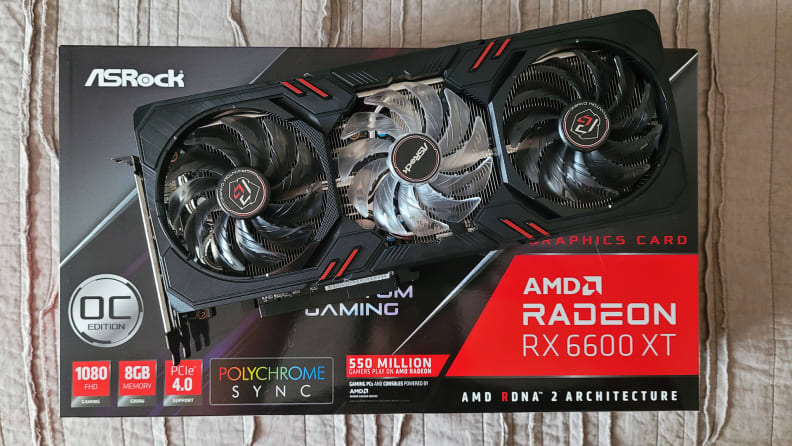
When you decide you want to upgrade your PC's gaming capabilities, it's easy to swap out your graphics card for something beefier.
Next up is the motherboard. Your motherboard chip should support your CPU and have features such as (WiFi 6AX, Thunderbolt 4, PCIe 4.0, etc.). Keep in mind that ITX motherboards are not as feature-rich as their larger mATX and ATX counterparts due to size constraints—usually, ITX boards have fewer PCIe lanes, fewer RAM channels, and fewer ports. If you're looking for an AMD Ryzen-compatible ITX board, we love the ASRock B550 Phantom Gaming-ITX/AX, which strikes a good balance between value and features.
Some CPUs come with a stock cooler, but we recommend shopping for your own. There are a lot of great affordable water cooler kits and fan coolers available these days, like Cooler Master’s MASTERLIQUID ML240L and Noctua’s NH-D9L CPU Cooler. No matter what you choose, though, make sure it fits in your case. Generally, ITX cases fit coolers shorter than 150mm and radiators shorter than 240mm.
For an ITX build, consider choosing low-profile RAM, since some cases and CPU coolers hang over the RAM ports to save space. You should be fine if your RAM is 42mm tall or less. As for the amount of RAM, most games are not RAM-intensive, so 16GB is enough for the majority of them. You also want to make sure your RAM has decent enough speeds, as that can also impact your PC's performance. The best RAM frequency for most people is 3200MHz RAM. You can find a 3600MHz RAM kit for not that much more, but most folks probably won't see many benefits from going past that speed.
When you boot your PC for the first time, make sure to enable XMP (sometimes called DOCP) to access your RAM’s full speed.
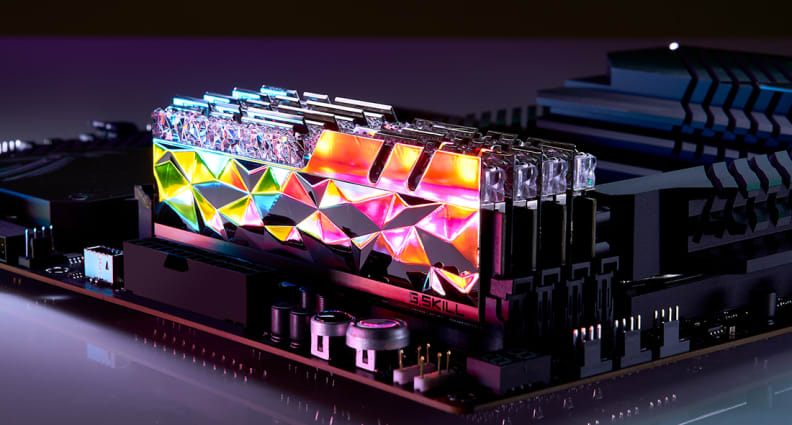
The best part of PC building is buying parts as elegant—or ridiculously flashy—as you like. This G.Skill Trident Royal Elite RAM is perfect for those with a maximalist sense of style.
For storage, you need an NVMe SSD that's PCIe 4.0 compatible to match the Series X and PS5. Older PCIe 3.0 tops out at 3.4Gb/s, so a PCIe 4.0 storage solution is the better choice since some models have speeds that top out as high as 7.0Gb/s. Currently, only AMD Ryzen 5000-series CPUs, 11th-gen Intel CPUs, and compatible motherboards have full PCIe 4.0 support.
Last but not least is the power supply. To calculate how much power you’ll need, add the power consumption of the CPU, CPU cooler, GPU, motherboard, RAM, and storage together. Try to get a power supply unit (PSU) that's 150 to 250W higher than that in case of power spikes. As with all the other parts, make sure the PSU fits your case, as well.
Next-gen or last-gen?

Intel and AMD have plenty of PS5/Xbox Series X equivalent-processors to choose from.
You can save a little money by shopping for older parts as we pointed out above, but one of the benefits of going with newer hardware is PCIe 4.0 support for those faster data transfer speeds. If you want a well-rounded, mid-range gaming PC, the below build using the Cooler Master NR200P case is not only powerful but also puts the PS5 and Xbox Series X to shame. These are all current-gen parts, similar to what you’d get if you bought a prebuilt PC.
However, this specific build’s upgrade path is a little tricky. Rumors suggest AMD will be using a new socket for its next generation of desktop processors, which means you will need a new motherboard since the processors won’t fit into any of the current or old models. It could be worth waiting for the 6000 series if that is the case.
But if you want something more powerful now, you can go with a build like this:
- CPU: AMD Ryzen 5 5600X
- CPU Cooler: Noctua NH-D9L CPU Cooler (125mm tall)
- GPU: Gigabyte Radeon RX 6700XT Gaming OG 12G (~280mm long, triple slot)/ Nvidia RTX 3070 (usually out of stock)
- SSD: Sabrent Rocket 4 1TB
- MOBO: ASRock B550 Phantom Gaming ITX/AX
- RAM: G.Skill Trident Z 16GB (2 x 8GB) DDR4-3200 16
- PSU: Corsair SF Series SF600 600W 80 Plus Gold
- Case: Cooler Master NR-200P with PCIe Riser (supports triple-slot GPU up to 330mm long, CPU cooler up to 155mm tall, up to 280mm radiator)
- Estimated Cost: $1,100 + GPU ($600 MSRP) = $1,700 to $2,000
How to actually find a GPU
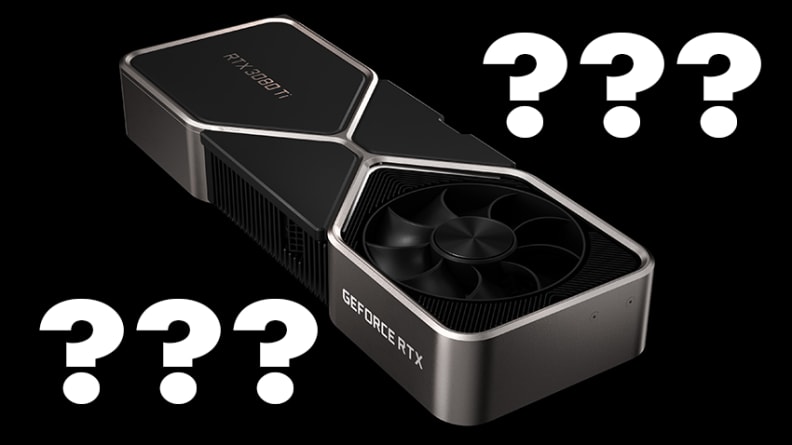
Sadly, graphics cards are still in short supply, but a little bit of patience goes a long way.
Shopping for a GPU in 2020 and 2021 has been difficult, to say the least. The global semiconductor shortage has put a strain on GPU supply, and aftermarket prices can be over twice the retail cost even for older models. But it’s not impossible to find one at a reasonable price. It just takes a lot of work and patience.
Microcenter holds lotteries every morning for local customers to buy a GPU, but if you don't have one nearby, you're not doomed. Monday through Friday mornings, online retailer Newegg holds a similar lottery called Newegg Shuffle. Live YouTube feeds, websites, discord channels and more monitor online retailers 24/7 and alert you if there are any restocks.
You can also use what you’ve learned here to shop for a great pre-built PC. System Integrator (SI) PC companies have partnerships with manufacturers to have a steady supply of parts, so you don’t have to hunt down the parts yourself. NZXT, Corsair, Maingear, iBuyPower, Cyberpower PC, and many others sell pre-built PCs with off-the-shelf parts that make it easier to upgrade your PC in the future, as well.
Enjoy your ship of Theseus
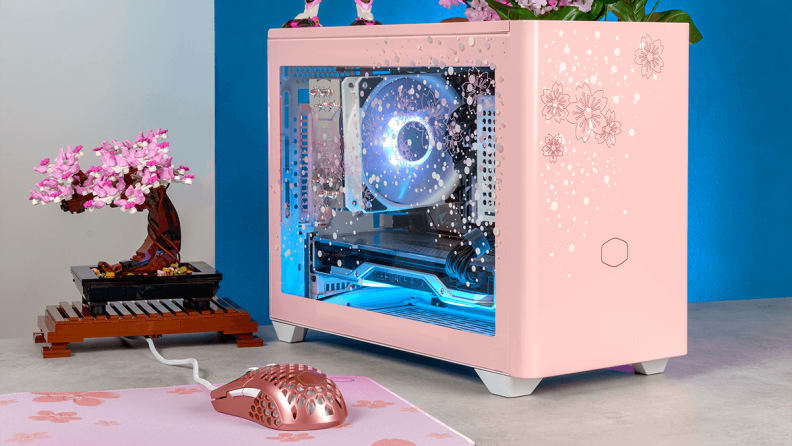
The Cooler Master NR200P comes in this pretty Sakura edition, but you can always modify any case with the right tools!
If you take it step by step, building a PC isn't so hard. It's also a lot of fun and offers a much more tailored experience than what you'd get from a store-bought PC or a video game console. Outside of price to performance, there are increasingly few reasons to pick a console over a PC: Sony exclusives like Red Dead Redemption 2 are getting ported to Steam, you can multitask, you can run your own 3D programs, and so much more. If you need a new PC and a new gaming console, consider building a gaming PC.
With our tips, tricks, and lists above, you should be able to put something together in no time. Your PC should last you at least five years before getting sluggish, enough time to wait until the next console generation—but the beauty is you can upgrade your PC along the way.
